Turning the Tide: Can Kamala Harris Flip Texas Blue?
There is growing momentum behind Kamala Harris in Texas.
Do you feel something? A buzz in the air? Maybe little sparks of electricity fluttering near your heart? Those sparks of hope and energy emanating from the Democratic ticket? That’s right, Texas Democrats, there’s a light at the end of the tunnel, and I’m here to tell you that it isn’t a train.
If you missed Kamala Harris’s rally in Philadelphia yesterday, where she introduced Tim Walz as her VP pick, it’s well worth watching. Here:
The energy from the top of the Democratic ticket over the last week has been frequently compared to the energy level we saw from President Obama in 2008. If you remember that thrilling time in 2008 politics, you probably agree. With this one caveat, Obama didn’t win Texas.
In 2020, Republicans only won by 5.58 points. Considering that Democrats have moved Texas left in every election over the last two decades (except for 2012), it isn’t a far stretch to believe we’ll move the needle again in November.
A few weeks ago, I asked this question: Kamala Harris Will Be In Houston On Thursday - Is Texas In Play?
The short answer was “Yes.” But more importantly, Texans need to understand that Texas is always in play. By both numbers and demographics, Democrats outnumber Republicans in the Lone Star State. We have for a long time.
So, why is Texas still red? Mainly, it’s because we don’t vote. But we’re working on it.
How do we know Texas will eventually turn blue?
Let me be clear: Texas will be blue. It’s inevitable. The only question is when? And how do we get there?
Texas has moved further left in every election since 2000 (except for 2012). Even though Republicans appear to have made gains in 2012, that year was still bluer than 2000 and 2004.
Also, since 2000, all major metro areas have turned blue, some becoming Democratic Strongholds.
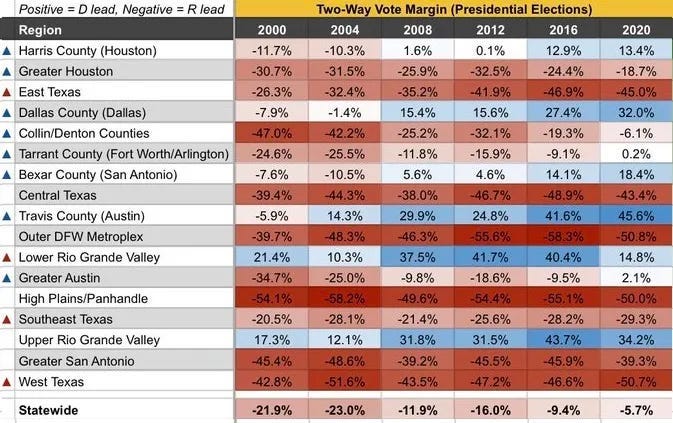
The only places in Texas where Republicans have been making gains are the Rio Grande Valley, Southeast Texas, and West Texas. However, this is not something to be overly concerned about since those areas combined only account for 11.9% of the vote share.

That means that 88.1% of Texas voters live in trending blue areas. Moreover, 53.1% of Texas voters live in already blue regions.
All of the data we have on who votes in Texas and where continuously shows us that even though Texas is dead last in voter turnout in America, we’re still moving left.
“Democrats have been saying we’re turning blue for years, but it never happens.”
The hard truth is that Texas could have turned blue long before now if people had only shown up.
In 2020, only 52.39% of eligible voters made it to the polls.
In 2016, only 46.45% of eligible voters made it to the polls.
Texas voters need to know that showing up is the only way to win.
If we already know that Texas has consistently moved left, even when we have the lowest voter turnout in America, imagine how far we could go if 60% of eligible voters, or 75% like in Minnesota, showed up. We would be a big bright blue beacon on a hill, outshining California and New York.
Let’s not get ahead of ourselves. This November, Texas will move left because the data has shown us moving left in every election, and 88.1% of Texan voters live in trending blue areas. We don’t know how far left we’ll move.
We only need to gain 3.53% more of the vote to flip the state to majority blue.
50.01% minus where we were in 2020 (46.48%) = 3.53%
And with each and every election, older voters are dying (Sorry. RIP), and younger voters are coming of age.
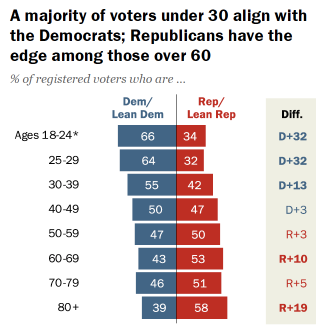
Most Americans under 50 align with Democrats, and that number only gets higher the younger a person is. This is one contributing factor to the inevitability of a blue Texas.
Another contributing factor to the bluing of Texas is the increasing diversity.

This matters because we know how these voting blocks generally vote.
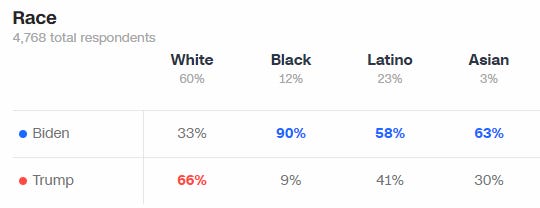
So, if we know that Most Texans live in trending blue areas, and the demographics that vote blue are increasing, we can conclude that Texas will continue to shift blue in this election and the foreseeable future.
Can Kamala Harris move the needle 3.53% further left?
There seems to be a lot of excitement around her campaign. Check out this short clip from her Wisconsin rally today:
Of course, Wisconsin isn’t Texas. Then again, Kamala Harris has been to Houston twice since announcing her campaign.
People on social media all over Texas report seeing TV ads for Kamala Harris.
In her speeches, Harris emphasizes issues that resonate deeply with Texans: healthcare reform, economic equality, and climate action. These are critical topics, especially in a state where access to affordable healthcare and the impacts of climate change are pressing concerns.
By focusing on issues that matter to younger voters and minority communities and making concerted efforts to reach out to them through targeted campaigns and grassroots movements, Harris is working to ensure that these often-overlooked voices are heard.
In the latest NPRS/PBS News/Marist poll, Harris is up +9 points over Trump.
Harris’ presence in Texas is substantial, with appearances in Houston, on TV, and a strong social media campaign targeting Texas voters. Her campaign's visibility is crucial for maintaining momentum and ensuring that her message reaches as many people as possible.
If you aren’t already involved, please consider getting to work right away:
Volunteer with your local candidate for block walking.
Sign up for phone banking with your county party.
Get involved with your local grassroots organizations.
Look for postcard parties on Mobilize.
All we have to do is show up, and it’s all hands on deck to make that happen.
The path to turning Texas blue is clearer than ever.
With Kamala Harris at the top of the ticket, there is a real sense of optimism and determination among Texas Democrats. The state's shifting demographics, Harris’ policies, and vigorous campaign efforts create a perfect storm for a potential Democratic victory.
It’s a historic opportunity for change; every vote will make it a reality. Texas, it’s time to show up, vote, and be part of this transformative moment in our history.
August 19: Last day for write-in candidates to declare their candidacy.
October 7: Last day to register to vote.
October 21: First day to early vote.
October 25: Last day to apply for a mail-in ballot.
November 1: Last day to early vote.
November 5: Election day!
LoneStarLeft’s Newsletter is a reader-supported publication. To receive new posts and support my work, consider becoming a free or paid subscriber.
Follow me on Facebook, Twitter, TikTok, Threads, YouTube, and Instagram.

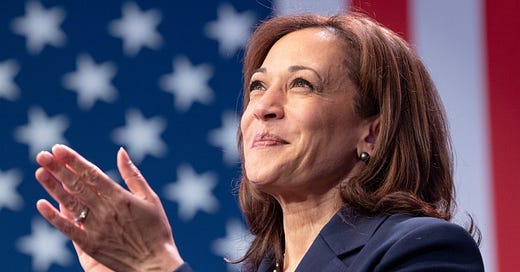




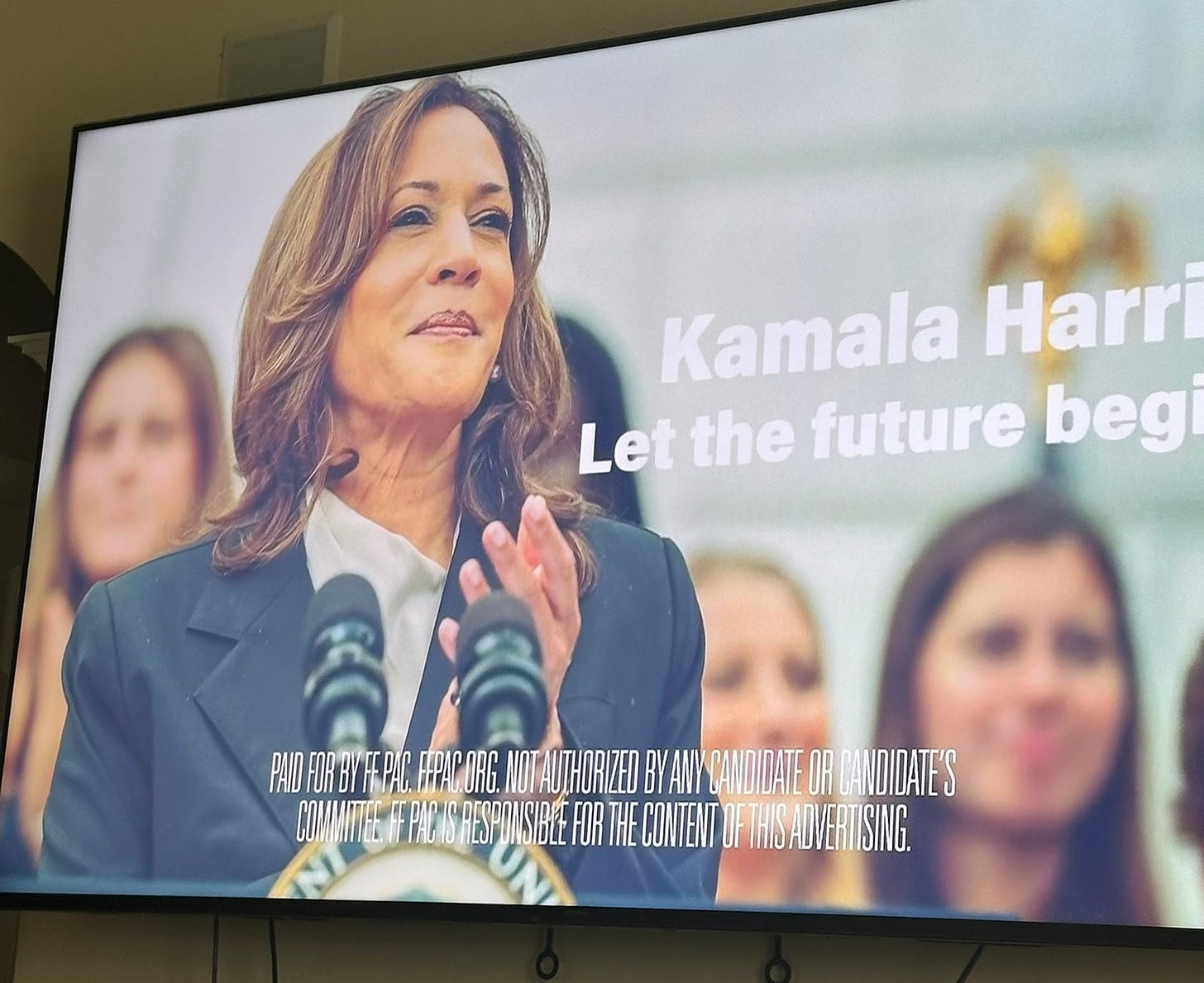

u won't hear anything form CD 12 Trey Hunt about this:
GOP Senators Halt Child Tax Credit Expansion, Citing Insufficient Work Requirements